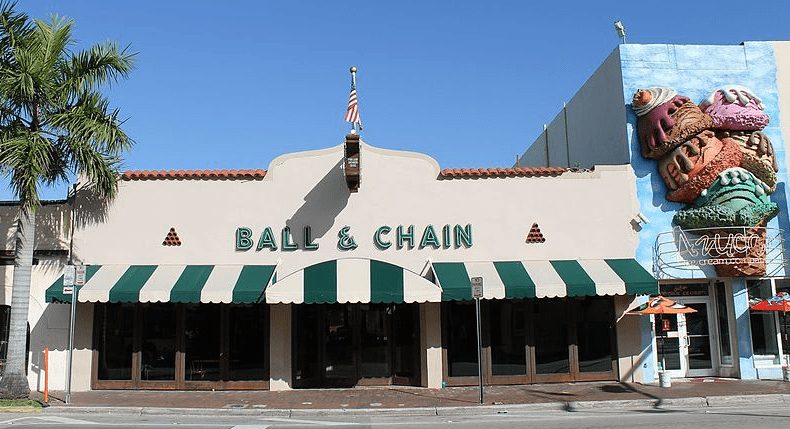
Judging by the international cast of visitors who come to Little Havana daily, this quarter of Miami is world famous! Such a development was unlikely just ten years ago when two venerable neighborhoods, Riverside and Shenandoah, divided by S.W. 8th Street/Calle Ocho, and critical components of a modern-day Ellis Island, continued to welcome hordes of political and economic refugees and immigrants from the Caribbean and Central America.
What has happened in the past ten years to change this picture, to transform a slice of the quarter, stretching for just five blocks east to west, into a go-to area for more than three million visitors annually? A major factor in its transformation has been the appearance of the Ball & Chain, a bar, music hall, and tapas establishment, offering live music throughout the day and evening, while drawing large crowds to its unique confines. With its opening, or, more accurately, its reopening– as we will see– in September 2014, the neighborhood, sometimes called the Latin Quarter, exploded in activity. The appearance of the Ball & Chain coincided with a sharp rise in the number of large tourist-oriented buses bringing visitors to the quarter daily.
With its unique, open, 3,000 square foot interior, featuring walls filled with photographs of prominent musicians who have performed there over time, a large circular bar with busy bartenders in the center, and an even larger patio in back exuding a colorful, subtropical ambiance, highlighted by its Pineapple stage, for musical presentations, the Ball & Chain stands as an exceedingly seductive atmosphere for the hordes of visitors, who pack both spaces.
But, wait, how could performers like Count Basie, Chet Baker, Billie Holiday, Harry the Hipster, and Gene Krupa, some of whom are pictured there, have entertained in a venue so young? The answer, of course, lies in the bar’s rich history. In 1934, in a cavernous, recently-completed building at 1531 S.W. Eighth Street, which is also part of the national Highway 41, stretching from the Midwest to Miami, the Ball & Chain bar and nightclub opened. While the name continues, the venue has, of course, changed from a more modest place to the unique establishment of today.
The Ball & Chain operated with notoriety in its early years, since it was a venue for illicit gambling, and was sometimes raided by the Morals’ Squad of the Miami Police Department. By the 1950s, it was offering many of America’s finest touring musicians. As noted, some were African-Americans who were performing in a “white” neighborhood, in a Southern city rigidly segregated by race. In the mid-1950s, Count Basie and Billie Holiday were regular attractions; Basie sometimes performed over the course of several days, while Billy Holiday was treated as a trusted member of the family of one of its owners.
In 1957, the Ball & Chain closed, put out of business by Count Basie, who successfully sued the bar for $5,000 owed him for an earlier appearance that year. In subsequent years and decades, the building hosted a dive bar, furniture store, and nightclubs, most of which were unsuccessful.
Nearly two decades ago, Bill Fuller, a young businessman and property owner in and beyond Little Havana, purchased the building. After its lease with the last of its occupants expired, Fuller and two partners, Ben and Zach Bush, carefully transformed the capacious space into the establishment of today. As they became aware of its rich history, the three decided to bring back the bar’s earlier name. Little Havana and the entire area should be proud of their creation.
Paul S. George, Ph.D., serves as Resident Historian, HistoryMiami Museum. He conducts history tours throughout the County and even beyond for HistoryMiami. Dr. George also leads Little Havana tours as part of Viernes Culturales, a monthly celebration, every third Friday, of the culture and history of that quarter.






